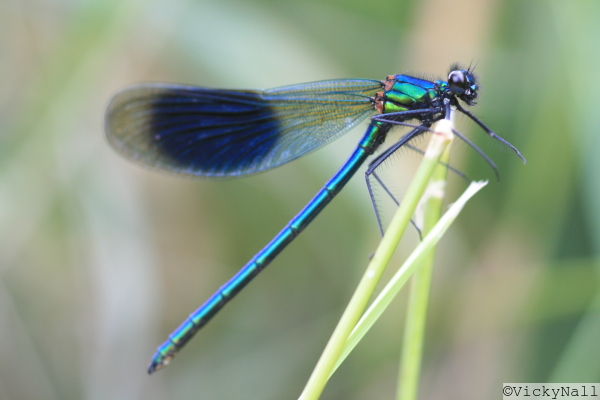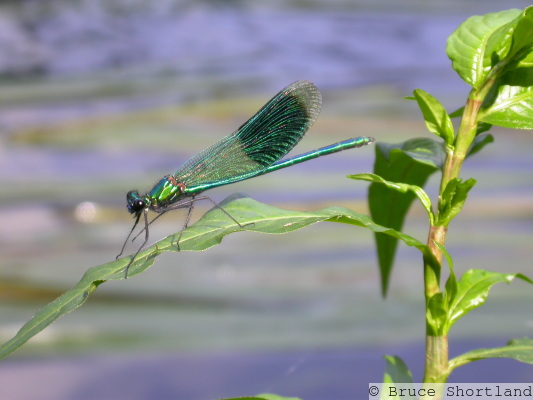Banded Demoiselle
Calopteryx splendens
<
>


 Type
Type Insect: Dragonfly
Insect: Dragonfly Season
Season Spring
Spring Summer
Summer Look towards the emergent plants in the canal, as well as at the vegetation to the sides of the towpath. Banded Demoiselles are common along the Montgomery Canal because of its excellent water quality.
Often mistaken for a dragonfly because of its impressive size (around 4.5cm long), the spectacularly striking Banded Demoiselle is in fact a large damselfly. Distinctive thanks to its slim metallic body and fingerprint-like wing mark (on males' wings), Banded Demoiselle males can be very territorial and perform fluttering display-flights to attract females.
While males have metallic blue bodies with fingerprint-shaped dark blue patches on their wings, females have metallic green bodies with pale green wings.
This damselfly can be spotted in flight near fresh water and wetlands from May to August and they particularly like slow-flowing rivers and canals along with peaceful ponds and lakes.
What's more, since they're very sensitive to pollution, their presence is a good indicator of clean water. Female Banded Demoiselles lay their eggs by injecting them into plant stems under the surface of the water. These will take a couple of weeks to hatch but the larvae will take two years to develop, overwintering in the mud at the bottom of the canal.
Of the damselflies in Wales, only the Banded Demoiselle and similar Beautiful Demoiselle have coloured wings. The Beautiful Demoiselle displays almost entirely dark, metallic wings while the Banded Demoiselle males have pale wings with a dark blue fingerprint-shaped marking.
Female Banded Demoiselles have pale green-brown metallic wings.
At rest, damselflies hold their wings along the length of their body.


